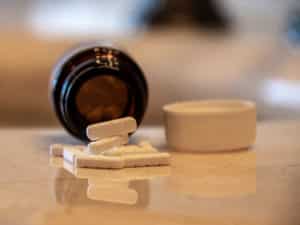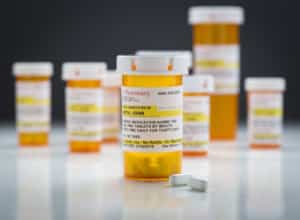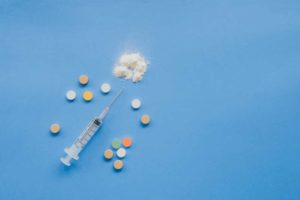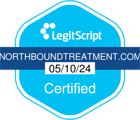What Is Suboxone?
Suboxone is a medication that has the potential to reduce symptoms of opiate addiction and withdrawal. Suboxone treatment programs are often combined with therapy and should always be followed by aftercare support. Addiction to Suboxone is a very real issue, which is why treatment should be monitored, but the Suboxone benefits tend to outweigh its dangers.
Suboxone is a combination of two drugs, buprenorphine and naloxone. Naloxone is an active ingredient in Suboxone used to treat opioid addiction that acts to reverse an overdose of opioids. It binds with opioid receptor sites to interfere with opioid attachment to the receptors. This prevents harmful effects of opioid drugs such as respiratory depression. When taken as directed, Naloxone does not interfere with Suboxone’s primary ingredient, buprenorphine.
Suboxone is prescribed as a sublingual film. When administered under the tongue as directed, only small amounts of Naloxone are absorbed into the bloodstream, and patients do not feel its effects. Naloxone is added to Suboxone to discourage intravenous use or dissolving the tablets. If used by means other than directed, the Naloxone constituent may quickly result in withdrawal symptoms, such as nausea and vomiting, drowsiness, dizziness, low blood pressure, memory loss and profuse sweating. Subutex sublingual tablets are frequently used in the initial stages of treatment for opiate dependence. Like Suboxone, its active ingredient is buprenorphine, but it does not contain Naloxone.
One distinct benefit of using Suboxone as treatment for opioid addiction is the “ceiling effect”, which simply means that taking more Suboxone than you’ve been subscribed will not result in a full opioid effect and the user getting high. This is a huge advantage over other treatment drugs, such as methadone.
Suboxone detox treatment has been found to be highly successful in treating opiate withdrawal symptoms. It can alleviate the pain and suppress cravings to allow patients to focus on other aspects of their treatment. Suboxone is the first medication used to treat opiate addictions approved to be prescribed from a physician’s office. Some patients may be able to administer the drug to themselves at home. Suboxone treatment allows patients to maintain their normal, daily activities while detoxing from opiate drugs.
Suboxone for Opiate Withdrawal
Suboxone detox treatment has been found to be highly successful in treating opiate withdrawal symptoms. It can alleviate the pain and suppress cravings, allowing patients to focus on other aspects of their treatment. Suboxone is the first medication used to treat opiate addiction that is approved to be prescribed from a physician’s office. Some patients may be able to administer the drug to themselves at home. Suboxone treatment allows patients to maintain their normal, daily activities while detoxing from opiate drugs.
Benefits of Suboxone
The major ingredient in Suboxone, buprenorphine, has undergone in-depth studies since 1978, when it was originally introduced as a method of treating opiate addictions. Clinical trials sponsored by the National Institute on Drug Abuse have found buprenorphine to be effective in:
- Alleviating withdrawal symptoms of opiate drugs
- Decreasing cravings
- Reducing illicit drug use
- Blocking the effects of other opiates
- Retaining patients in treatment programs
- Counseling, in addition to medication, was included as a part of the treatment program in each of the studies.
The combination of medication assistance with suboxone treatment and counseling can help retain patients in treatment programs. Suboxone treatment controls withdrawal symptoms and cravings that distract them from recovery efforts and allows them to focus on addiction counseling. Education and counseling play an essential role in Suboxone detox programs. It helps patients gain skills in effectively dealing with situations that may otherwise result in a relapse. Treatment programs also address the underlying causes of substance abuse such as depression, anxiety or other forms of mental illness
How Long Has Suboxone Been in Use?
Suboxone for opioid addiction was first introduced by the FDA in 2002. It was the first medication that could be prescribed by physicians through the Drug Addiction Treatment Act, which made treatment much easier to access for individuals who need it. It is estimated that over 400,000 people around the world have been treated for opiate dependence with Suboxone and other types of Buprenorphine. There was also a temporary expansion on prescribing eligibility given in July 2016, in the form of the Comprehensive Addiction and Recovery Act (CARA), allowing qualifying nurse practitioners and physician assistants to prescribe buprenorphine-based drugs for MAT (Medical Assisted Treatment) rather than just physicians.
MAT can include use of Suboxone to complement the behavioral aspects of addiction treatment, such as counseling, education and other support measures. MAT for opioid addiction is similar to using medication to treat other chronic illnesses such as asthma or diabetes. It’s important to remember that taking medication for opioid addiction is not the same as substituting one addictive drug for another. Rates of success for Suboxone treatment have been high, with some studies reporting 40-60% of those treated are still sober after one year.
Does Suboxone Cause Physical Dependence?
The use of opioid drugs of any type has the propensity to lead to physical dependency. However, Suboxone is a partial opioid agonist and doesn’t produce the euphoria common among drugs that are full agonists such as oxycodone. As a result, Suboxone use results in a lesser degree of physical dependency and reduces the probability of developing a tolerance as opposed to full agonists. Suboxone offers a level of support that enables patients to focus on other aspects of treatment such as counseling. The next step in the process is to gradually lower the dosage until the patient can terminate drug use. Unfortunately, in many cases, opiate dependence is so powerful and strong that the safest option they have is to dilute the craving gradually, to a point where the individual has the strength and resources to fully stop. Some withdrawal symptoms may still be experienced, but they are much less severe than those of a full opioid agonist. These will be managed at the discretion of a physician.
It Is Critical to Use Suboxone as Directed?
If you have questions or need information, it’s important to seek Suboxone help from a qualified health-care professional. It is critical that Suboxone and Subutex be used with other medications as directed by a physician. Abuse of Suboxone and Subutex can lead to death. A number of deaths have been reported as a result of these drugs being injected. Most fatalities involved the use of Suboxone or Subutex in conjunction with benzodiazepines. Patients undergoing treatment with Suboxone or Subutex should avoid using benzodiazepines, tranquilizers, sedatives or alcohol. If you need assistance, call the Suboxone helpline at 877-782-6966 or contact us at 877-674-6529
Ultimately, Suboxone is a helpful drug for people who are committed to sobriety from addictive opiates. While it can create a dependency, similar to antidepressants, it helps users move from addictive behaviors and begin to rebuild their lives. Individuals who undergo Suboxone treatment long-term tend to have better outcomes than those who simply use it to detox. It doesn’t have to be long term, but it can be. If an individual decides to eliminate treatment, a gradual decrease by your doctor will be administered.
Northbound Treatment Services has a nationally recognized and award-winning addiction recovery program. We offer a variety of residential and outpatient treatment programs to help individuals through the recovery process while remaining productive in society. We understand that no two individuals are the same and offer customized treatment plans to meet each individual’s needs.











